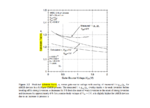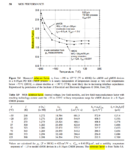SparkingDog
Newbie level 6
I am designing a real high-side switch circuit but my questions really apply to mosfets in general.
The datasheets for discrete mosfets generally specify a Vgs Theshold (example: -0.45V @ Ids=250uA) and an Off leakage current (example: Ids<1uA @ Vgs=0V). In my circuit it is not practical to get Vgs=0; and 250uA is too large a current for my off state.
Question #1: Is there an equation or rule of thumb that allows me to put a bound on Ids for 0<Vgs<Vth ? i.e. sub-threshold Ids (For example: Ids<1uA)
Also graphs of leakage current versus temperature indicate leakage currents which are orders of magnitude smaller than the worst case listed in the spec table.
Question #2: Is the real leakage current the 1uA max in the spec table or the 20nA in the graph?
The datasheets for discrete mosfets generally specify a Vgs Theshold (example: -0.45V @ Ids=250uA) and an Off leakage current (example: Ids<1uA @ Vgs=0V). In my circuit it is not practical to get Vgs=0; and 250uA is too large a current for my off state.
Question #1: Is there an equation or rule of thumb that allows me to put a bound on Ids for 0<Vgs<Vth ? i.e. sub-threshold Ids (For example: Ids<1uA)
Also graphs of leakage current versus temperature indicate leakage currents which are orders of magnitude smaller than the worst case listed in the spec table.
Question #2: Is the real leakage current the 1uA max in the spec table or the 20nA in the graph?

